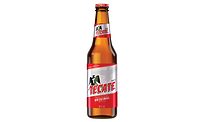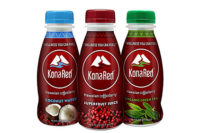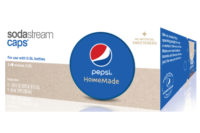Positive Results?
International sales and non-carbonated products resulted in positive showings for soft drink companies in 2007.
The Coca-Cola Co. reported net operating revenues
improved 20 percent for 2007. Worldwide, Coca-Cola’s unit case volume
increased 6 percent for the year, which added more than 1.2 billion case
units in 2007. Acquisitions contributed 1 point of unit case volume growth
for the year.
“By successfully executing our clearly defined
strategies with our bottling partners, we delivered 6 percent unit case
volume growth for the year and four consecutive quarters of double-digit
earnings per share growth,” said Neville Isdell, chairman and chief
executive officer of The Coca-Cola Co., in a statement.
“Importantly, this growth was balanced across
our geographies and portfolio of brands. On a worldwide basis, sparkling
beverage volume increased a solid 4 percent, and still beverages increased
12 percent.”
Coca-Cola’s sparkling beverage unit case volume
weakened 2 percent for the year. Coca-Cola Zero, which launched in 2005,
delivered growth for the company, increasing unit case volume double digits
for the year. And the still beverage unit’s case volume increased 5
percent.
Good news globally
PepsiCo also reported many positive findings in its
full-year results. Net revenue strengthened 12 percent and reported
operating profit and core division operating profit both grew 10 percent.
PepsiCo grew worldwide revenue 12 percent for the
year, which includes 4 percent in volume growth in beverages. PepsiCo
International led volume gains with 8 percent beverage growth. Volume in
PepsiCo Beverages North America (PBNA) was flat compared with the prior
year.
Non-carbonated beverages also drove volume growth at
PBNA. Beverage volume increased 1 percent in the quarter, which reflects
high single-digit improvement in non-carbonated beverages and is partially
offset by a low single-digit dip in CSDs.
The success story at PepsiCo is PepsiCo
International’s double-digit growth in the Middle East, China,
Brazil, Argentina, India and Russia. Overall, CSDs grew at a high
single-digit rate, posting growth in each of the division’s four
largest trademarks. Non-carbonates still led the division’s beverage
volume growth, and posted double-digit gains.
Optimistic demerger
In March 2007, Cadbury Schweppes announced the
separation of its confectionery and Americas Beverages businesses. Americas
Beverages generates more than 80 percent of its revenues in the United
States, and Cadbury Schweppes determined that the demerged Americas
Beverages should be listed on the New York Stock Exchange as Dr Pepper
Snapple Group (DPSG).
In its full-year results the company reported revenue
increased 7 percent to $15.6 billion for all of Cadbury Schweppes. The
figure includes a 16 percent gain in profits in the Americas Beverages unit
due to the acquisition of the Dr Pepper/Seven Up bottling group.
Americas Beverages reported an increase of 4 percent
in base business revenues, led by Sunkist and A&W. The company said
that it continued to benefit from the trend away from colas to flavored
CSDs. The company’s CSDs grew 1 percent in the United States, and its
share of the CSD market rose by 40 base points, the company says. It marks
the fourth consecutive year of share gains.
In February, Cadbury Schweppes also announced that
Wayne Sanders will be the chairman of DPSG, following the demerger. Sanders
spent 28 years at Kimberly-Clark where he served 11 years as chairman and
chief executive officer before retiring in 2003.


